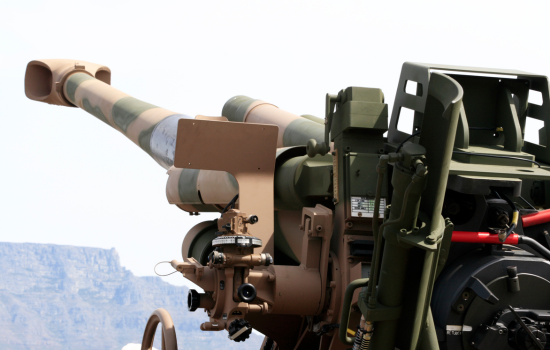Anti-Foreign Policy, Pakistan and the Security-Development Nexus
First published by INSCT on Security – link to initial publication.
In a 2010 article in the influential journal Foreign Affairs, Secretary of State Hillary Clinton outlined her foreign policy philosophy. The article entitled “Leading through Civilian Power” emphasized Clinton’s belief that there is a strong connection between development and security. Clinton argued that there is a direct link between international insecurity and societies affected by poverty, human rights violations and lack of democratic governance. These shortcomings lead to fragile states that become homes to terrorists and criminal syndicates, which then threaten US national as well as international security. Clinton maintained that with a real commitment in terms of manpower and resources these societies can change and she declared that the United States was “willing to accept the responsibility of mobilizing action” to foster the necessary change.
Since assuming the office of Secretary of State, Hilary Clinton has engaged in what some have described as anti-foreign policy, a non-instrumental, non-strategic policymaking focused on self-image and rhetoric as opposed to facts. (David Chandler, 2007). This approach has come to define US policy towards Pakistan, as US policymakers assume that Islamic radicalism and specifically Islamic terrorism not to mention conflict in general is driven primarily by lack of development – poverty, economic hardship and lack of social movement. However, the link between terrorism and poverty lacks strong empirical evidence. (Alan B. Krueger and Jitka Maleckova, 2002) Ultimately, when looking at US foreign policy towards Pakistan what has occurred over the last decade is a foreign policy mishmash that unites security and development. The mishmash is caused by the fact that US policymakers do not understand the root of Pakistan’s instability.
Over the last decade or so, USAID has invested in many development projects, such as the Gomal Dam in South Waziristan, designed to provide electricity to over 20,000 homes in the region. USAID has worked to cure Pakistan of its endemic energy shortages (in some areas of the country there are 14-hour long energy shortages). The assumption behind the electricity drive is that it can help reduce anti-Americanism because electricity “is essential to economic growth and political stability. Efficient energy management facilitates trade, enhances agricultural and industrial production, supports job creation, and increases opportunities for all citizens to benefit from economic growth” (USAID-Pakistan website). Another sector to see a large infusion of US cash and assistance is education (approximately 20 million school-age children out of a population of 170 million do not have regular access to quality education); literacy rates for Pakistanis are 69% for men and 44% for women (USAID-Pakistan website). The focus on education stems from a common misperception that lack of good public education encourages Pakistanis to attend madrassahs that preach a radical version of Islam and a strong dosage of anti-American teaching. (Christine Fair The Madrassah Challenge: Militancy and Religious Education in Pakistan (USIP, 2008)).
In the area of security, the United States has provided Pakistan with assistance in training and equipment, as both countries appreciate that the Pakistani military establishment, which includes the Frontier Corps, is and was ill-equipped to deal with the Taliban and al-Qaeda. Thus, according to the Congressional Research Service of the $20.6 billion provided to Pakistan since 2001, $14.2 billion has been security related, of which about $8 billion is for Coalition Support Funds (CSF): military reimbursement for supporting US military operations (CRS, May 6, 2011).
Following the killing of Osama bin Laden, Secretary Clinton has repeatedly castigated Pakistanis for allowing the former Saudi national to hide in the military town of Abbottabad. Initially she and others accused Pakistan of incompetency and failure, with the subtext being that Pakistan has failed to live up to American expectations. Clinton in effect claimed that the Pakistanis have reneged on the “aid deal” – US aid money in return for substantive changes in Pakistan that would make the country more stable and thus enhance US national security. However, what Clinton does not appreciate is that Pakistan has deep-seated problems that go beyond aid money – i.e. aid money alone cannot fix these problems. The country grapples with the forces of history, modernity and religion, which pulls it in different directions – Islamists have a vision of Pakistan that many Pakistanis reject (a 2010 Pew report found that less than a fifth of Pakistanis view the Taliban favorably (Anatol Lieven The Washington Post, June 3, 2011)) but Islamists are a powerful force that gather support when Pakistan is humiliated. At the same time, Pakistan also grapples with wealthy landowning elites and powerful industrialists who refuse to countenance reform of the system. Add to this cauldron of troubles and competing interests, a powerful military establishment that operates with little oversight and has done so for decades.
When thinking about the security-development nexus in respect to Pakistan, it is important to realize that development is a long and arduous process that takes decades to accomplish. It takes years to train, educate and build infrastructure, especially when a society faces as many obstacles as the ones faced by Pakistan. Each new crisis has pushed Pakistan back down the development ladder. The recent global economic downturn has added more problems to Pakistan: in the immediate post-2008 period, its GDP tumbled to below 3% (between 2008 and 2011, Pakistan’s GDP grew at an average of 2.6%, the lowest in South Asia – India’s GDP rose by around 8% and Bangladesh’s GDP increased by 6% over the same period). Inflation has increased by 15% whilst food inflation between 2008 and 2009 was 26.9%, which meant that 6.7% of the population enter the poverty cycle each year (2009-2010 was 12% and 2010-2011 food inflation stood at 18.4%). Consequently, 74.12 million Pakistanis live below the poverty line (The News International, June 6, 2011). The floods of 2010 aggravated Pakistan’s difficulties by causing a $10 billion loss to its economy. (Pakistan Tribune, June 5, 2010) Beyond Pakistan’s dire economic and social situation, the on-going insurgency and rampant terrorist activity has occupied much of Pakistan’s security services. It has drained Pakistan’s treasury and wrecked economic and social damage. The Economic Survey of Pakistan has recently claimed that since 2006 direct and indirect costs of combating terrorism for Pakistan have been $68 billion (The Express Tribune, June 3, 2011).
Increasingly Pakistanis are showing greater resistance to the US development program for being laced with too many strings and demands (the Kerry-Lugar Act is a prime example of anti-foreign policy as it has 11 different US objectives vis-à-vis Pakistan). Pakistanis resent the fact that US policymakers feel that just because the US provides aid – to the tune of a billion dollars a year – it feels that it can talk down to Pakistan (the aid to Pakistan needs to be compared with the $19 billion in development aid given to Afghanistan since 2002). What angers Pakistanis is that they know that the aid is provided not because the US cares about them or their country but because the US needs Pakistan. This is why when USAID proposed to build or fix 1,000 schools in the southern Punjab, the project encountered much opposition – many people opposed taking US money (The Nation, May 21, 2011). Shahid Javed Burki a former finance minister and vice-president of the World Bank has pointed out that should US civilian assistance be completely removed it will have an impact of 0.14% on Pakistan’s GDP growth. Ishrat Husain, a former governor of the Pakistan Central Bank, has endorsed this view (Express Tribune, May 20, 2011). Even in terms of security-related aid, there are many problems especially with the CSF. Washington wants to ensure that the money is used correctly – i.e. to support coalition efforts (there are concerns that the Pakistani government uses the CSF money for budgetary support, something that the Musharraf government allegedly did (The Dawn, May 26, 2011). Americans point to various Pakistani abuses of the CSF fund – the construction in of a $200 million 2008 defense radar installation, a $15 million claim for bunkers that were never built (Reuters, May 19, 2011). These legitimate US concerns have meant continuous delays in reimbursing Pakistan (in 2010 the outstanding payment for CSF was $2 billion (The News International, May 25, 2011). Pakistanis for their part resent the delays and accusations, claiming that they are fulfilling their part of the bargain, whether it is in fighting the insurgents (it has claimed the lives of 35,000 Pakistanis (3,500 security personnel) (The Express Tribune, June 3, 2011)) or assisting the US transfer equipment to Afghanistan.
Ultimately, serious questions arise when there is a strong linkage between development and security especially when US aid is loaded with so many restrictions and conditions, which mean that it is unclear what are the objectives of the aid – development or security. The lack of clarity has created a topsy-turvy foreign policy program that fails to satisfy both sides and often accomplishes very little, whether in terms of development or security. What adds to the failures of the program is its heavy emphasis on rhetoric. Air Commodore (Retd.) Khalid Iqbal in a recent op-ed summed up the feeling of many Pakistanis by declaring, “it is time for the Pakistan nation to carry out a reality check, take a fresh stock of the cost benefit asymmetry and make a distinction between reality and myth of American aid” (Pakistan Observer, May 29, 2011).
US policymakers must realize that anti-Americanism in Pakistan is caused by US action (drone attacks and breaches to Pakistani sovereignty), US rhetoric (castigating Pakistan as a failed state and accusing its leaders of incompetency and/or collusion) and US arrogance (US decides what Pakistan needs). In other words, the security-development nexus fails US policy in respect to Pakistan because to a former colony, steeped in its history and tradition, US attitude smacks of imperial behavior. Thus, if the US wants to help Pakistan, it should separate the majority of its assistance funds, as combining development and security has been ineffective, harmful and at times meaningless. Let the military (US and Pakistan) do what it is good at – fight the insurgents – while the development people work towards educating and building a strong infrastructure. A second important policy goal is putting an end to an anti-foreign policy style that simply aggravates allies. Allies need to talk to one another on equal footing and not behave sanctimoniously, when neither can ignore their role in the violence that has plagued the region. Such attitude simply creates more tensions and prevents reconciliation and progress.






